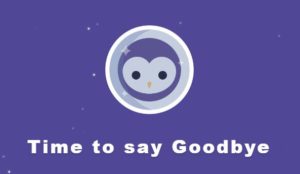Blab was shut down the other day.
You may be forgiven for having no idea what I’m talking about. (Though I did touch on Blab in an earlier post.)
While a few large brands (e.g., ESPN, Adobe) jumped on board the Blab livestreaming train, it never become a go-to platform for content creation. It’s a great reminder of why you need to be cautious of jumping on every shiny toy.
While the demise of Blab will pass unnoticed by most, it’s actually a great example of why the future of livestreaming is strong.
The law of unintended consequences.

Blab’s co-founder, Shaan Puri, wrote a fascinating post about why Blab was shuttered and what’s next. He said that the platform failed because:
- most live streams suck
- there was a divide between making content and making friends
Puri explained:
“The majority of usage came from everyday people ‘just hanging out.’ They weren’t making content, they were making friends… It was a place to unwind after school or work. Without any scheduling or planning—you could find your friends hanging out on Blab. The lounge was ‘always on,’ and the conversation would rage through the night until the sun comes out the next morning.”
So what’s next?
“Blab was great in many ways, but it wasn’t going to be an everyday thing for millions. So we’re kicking down the sandcastle, and re-building it as an ‘always on’ place to hang with friends.”
While its successor platform will live stream, its intent will no longer be brand-focused, content creation. It’ll be more like Amazon-owned Twitch (no, I don’t get it) and Mitch Joel’s conception of a network-based world.
Blab was great for content creation, but it didn’t have an audience.

The Blab team built a great product. I loved not only the ease of use but also the ability to record, grab the content, and re-post to a website and/or YouTube.
But it didn’t arrive with an audience.
It’s not Facebook Live, which had 1.13 billion users in June alone — many of them mobile users. And it’s not Periscope, which in many ways piggybacks off Twitter’s user base. You still need to get the content piece right, but you’re already hanging out where people are looking for content.
The future of livestreaming is strong.

While Puri is tepid on the future of livestreaming (he writes that “the struggle with livestreaming is that we need to show you something awesome, that’s being made right now.”), I think he’s got this wrong.
I’ve written before that livestreaming connects the video + the conversation. And I’ve talked about how these emerging platforms enable you to broadcast, people to watch and comment live, and you to respond, take questions, and otherwise engage with your audience.
A few potential examples:
- a product launch
- a conference keynote
- a CEO Q&A with customers
- a behind-the-scenes tour
- a pre-launch preview for brand ambassadors
- a sneak peak product demo
This isn’t sexy stuff, but it connects you with your audience. I think the future of livestreaming is strong, but we need to stop being so hard on ourselves. Not all content has to be brilliant — it just has to be effective.



